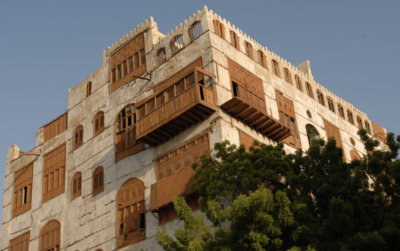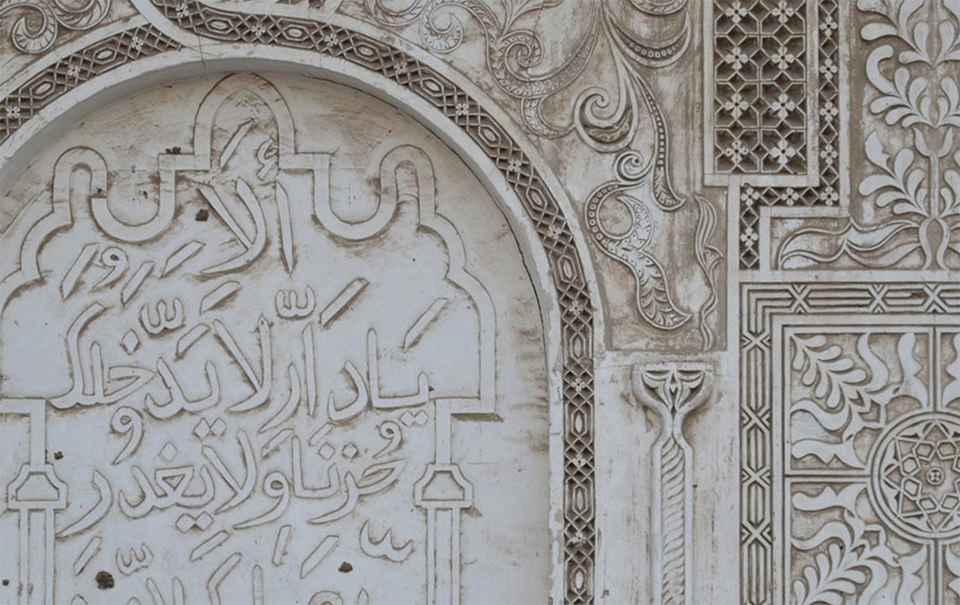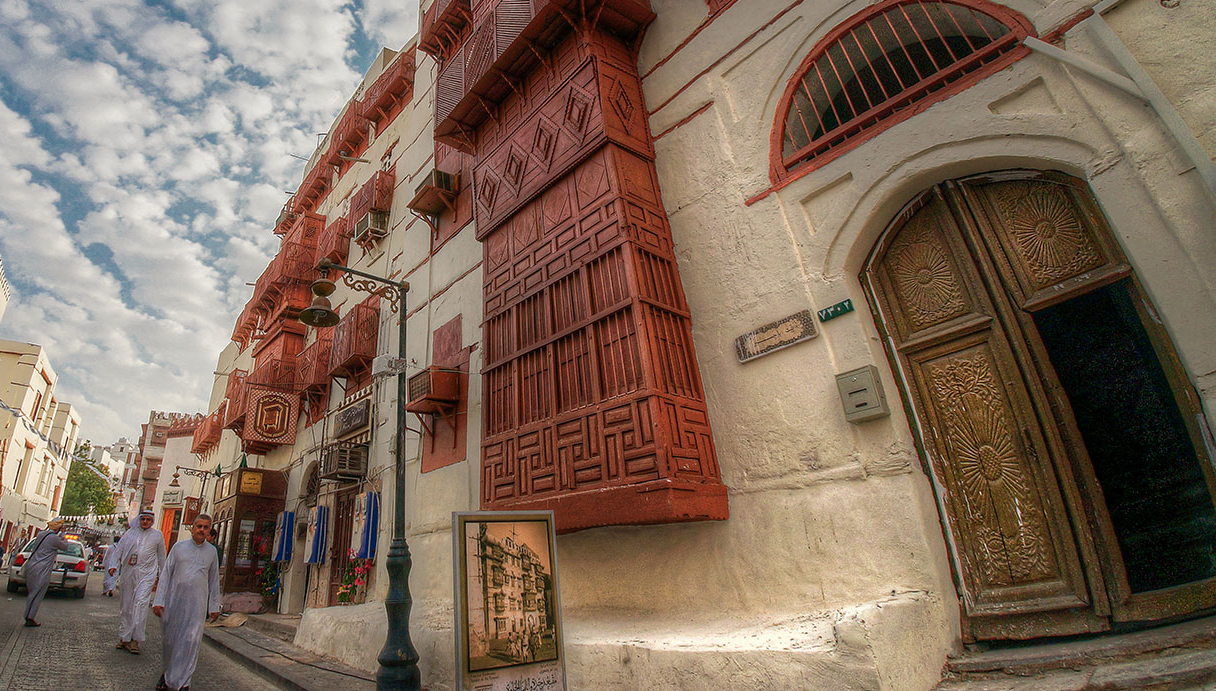Last week, SUSTG published the first in a series of posts highlighting the seven wonders of Arabia as selected and featured by AramcoExpats.com, an online blog that is a resource for current and former Saudi Aramco expatriates and their families. As the Kingdom prepares to open itself up to more visitors and boost its tourism industry in line with Vision 2030, the SUSTG team is pleased to feature AramcoExpats.com excellent work highlighting some of the most amazing places that Saudi Arabia has to offer – many of which have not been seen by outsiders before.
The first of seven wonders of Arabia was Madain Salih, the Nabataean desert city with monumental buildings carved from rock which has often been compared with Jordan’s Petra.

Historic Jeddah – the old Al Balad quarter, with its old buildings and traditional souks.
This week’s post, the second of seven wonders of Arabia, is on Jeddah’s Historic District, also known as “the Bride of the Red Sea,” about 200 miles due south of Madain Salih. Granted World Heritage status by UNESCO in 2014 and located in the Tihamah region of the Hejaz on the west coast of the Kingdom, “the port city of Jeddah has served for well over a millennium as a vital nexus for trade routes connecting Arabia and the Mediterranean Basin with India and lands east via the Red Sea, Gulf of Aden, and Indian Ocean,” according to AramcoExpats.com.
“Added to that, since the birth of Islam, its port precincts have welcomed untold millions of pilgrims arriving by ship on their way to the holy cities of Medina and Makkah. Across many centuries, a multitude of international interconnections such as these, fostered by faith and trade, have resulted in a vibrant multicultural city unique in the world, major vestiges of which, concentrated in the Old Jeddah quarter adjacent to the historic waterfront, endure to this day. Thanks to the concerted efforts of forward-thinking Saudi leadership and UNESCO, dramatic steps are being taken—and still more are planned—to ensure that the wonders of Historic Jeddah will endure for the benefit and enrichment of future generations.”
Jeddah has what UNESCO calls a “distinctive architectural tradition” which includes “tower houses” built in the late 19th century by the city’s mercantile elites, combining Red Sea coastal coral building traditions with influences and crafts from along the trade routes.

Historic Jeddah is surrounded by a defensive wall with seven gates.
The style of buildings in Jeddah’s historic district combines rich wood terraces and exterior wood enclosures with stone and coral structure, providing contrast in both color and texture.
Historic Jeddah is surrounded by a defensive wall with seven gates, which were built in stages according to necessity and are known as Bab Makkah, Bab Al Madina, Bab Al Sharif, Bab Jadeed, Bab Al Bint and Bab Al Mughrabi. At the beginning of the 2000s, Bab Al Saba was added, according to the website sauditourism.sa.
As the AramcoExpats.com post points out, When UNESCO inscribed Jeddah as a World Heritage Site in recognition of its outstanding universal value, they did so citing three key criteria:
Criterion (ii) – “to exhibit an important interchange of human values, over a span of time or within a cultural area of the world, on developments in architecture or technology, monumental arts, town-planning or landscape design.” [On this count, UNESCO notes, “the cityscape of Historic Jeddah is the result of an important exchange of human values.”]
Criterion (iv) – “to be an outstanding example of a type of building, architectural or technological ensemble or landscape which illustrates (a) significant stage(s) in human history.” [On this count, UNESCO notes, “Historic Jeddah is an outstanding reflection of its final flourishing as a trading and pilgrimage city and, the only surviving urban ensemble of the Red Sea cultural world.”]
Criterion (vi) – “to be directly or tangibly associated with events or living traditions, with ideas, or with beliefs, with artistic and literary works of outstanding universal significance.” [On this count, UNESCO notes, “Historic Jeddah is directly associated, both at the symbolic intangible level and at the architectural and urban level with the Hajj, the yearly Muslim pilgrimage to the Holy City of Makkah.”]
***
[Click here to read the original post from AramcoExpats.com on Historic Jeddah, which includes great excerpts from T.E. Lawrence’s writings on Jeddah]
[Click here to read the first post in this seven-part series on the seven wonders of Arabia]









